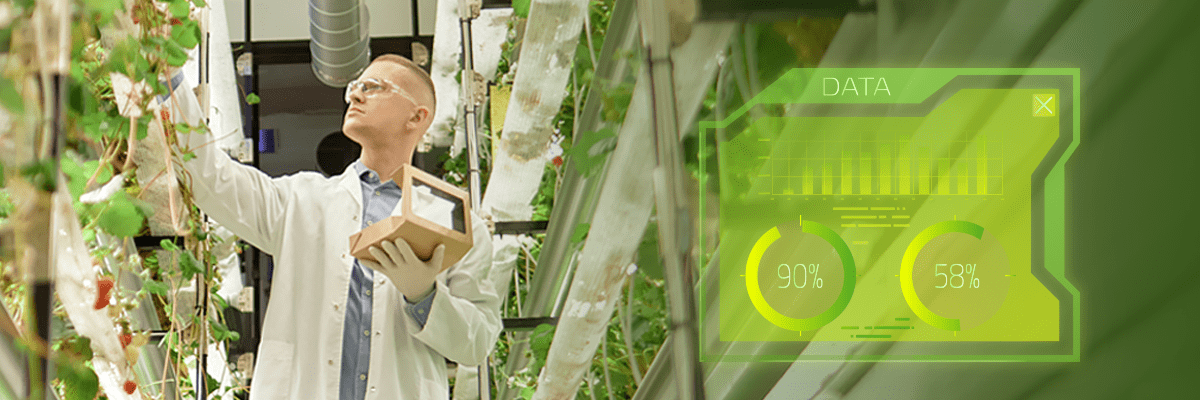Growing Smarter: Boosting R&D for Vertical Farming Success
As large-scale research and technological advancements in vertical farming continue to progress across the United States, Europe, and Japan, how much attention and support is the South Korean government providing for domestic smart farm research? This article analyzes South Korea’s government investments in vertical farming technologies and their implications.

First, it is important to recognize that vertical farm research in South Korea is closely linked to other agricultural research fields. Among the most relevant topics are protected horticulture and plant factory studies, both focus on commercial indoor cultivation and therefore contribute significantly to vertical farming systems development.
Considering this interconnection, total government R&D funding for vertical farms, protected horticulture, and plant factories in South Korea amounted to approximately 26.41 billion KRW from 2019 to 2022, with 24,461 research projects conducted during the same period. Major government institutions supporting this research include the Ministry of Agriculture, Food and Rural Affairs (MAFRA), Rural Development Administration (RDA), Ministry of Science and ICT, and Ministry of Education. While overall agricultural research and funding have been steadily increasing annually, R&D funding specifically for vertical farming experienced a slight decline in 2020, rebounded in 2021, and has remained stagnant since 2022.
Conversely, protected horticulture and plant factory research funding and project numbers have seen steady growth, suggesting that managing single-layer indoor farms under controlled conditions remains more cost-effective than researching multi-layer artificial lighting and nutrient injection methods for vertical farming. On average, investments in vertical farming, protected horticulture, and plant factories accounted for 20% of total agricultural research funding (averaging 125 billion KRW annually from 2019 to 2022) and demonstrated a similar proportion in terms of total research project numbers.
Government R&D funding supports research in three primary areas related to vertical farms, protected horticulture, and plant factories: fundamental research, development research, and applied research. Among these, development research holds the largest share across all three fields, though their specific focus varies.
Protected horticulture maintains a balanced distribution across fundamental, development, and applied research objectives, ensuring a well-rounded approach to advancing controlled-environment agriculture. Similarly, plant factory research follows a comparable pattern but has gained heightened multi-ministerial support since 2022, reflecting an increased level of government interest in this sector.
In contrast, vertical farm research is predominantly centered on development and application, with fundamental research receiving relatively little attention compared to related topics. This trend suggests that vertical farming research in South Korea prioritizes refining existing technologies and optimizing implementation costs rather than developing entirely new innovations.
Despite stagnant government R&D funding, South Korean companies such as Nongshim Farm continue to introduce cutting-edge vertical farming and IoT agriculture technologies to global markets—achieving levels of innovation that other countries could not match within the same time frame or budget. The key to this success lies in South Korea’s ICT expertise, which plays a crucial role in vertical farm and plant factory research, particularly in the development of precision agriculture.
With government R&D support, advanced environmental control and monitoring systems are being established and deployed, solidifying South Korea’s position as a global leader in vertical farming technologies. As future agriculture continues to evolve, South Korea is poised to expand its influence in the international agricultural sector.
Considering this interconnection, total government R&D funding for vertical farms, protected horticulture, and plant factories in South Korea amounted to approximately 26.41 billion KRW from 2019 to 2022, with 24,461 research projects conducted during the same period. Major government institutions supporting this research include the Ministry of Agriculture, Food and Rural Affairs (MAFRA), Rural Development Administration (RDA), Ministry of Science and ICT, and Ministry of Education. While overall agricultural research and funding have been steadily increasing annually, R&D funding specifically for vertical farming experienced a slight decline in 2020, rebounded in 2021, and has remained stagnant since 2022.
Conversely, protected horticulture and plant factory research funding and project numbers have seen steady growth, suggesting that managing single-layer indoor farms under controlled conditions remains more cost-effective than researching multi-layer artificial lighting and nutrient injection methods for vertical farming. On average, investments in vertical farming, protected horticulture, and plant factories accounted for 20% of total agricultural research funding (averaging 125 billion KRW annually from 2019 to 2022) and demonstrated a similar proportion in terms of total research project numbers.
Government R&D funding supports research in three primary areas related to vertical farms, protected horticulture, and plant factories: fundamental research, development research, and applied research. Among these, development research holds the largest share across all three fields, though their specific focus varies.
Protected horticulture maintains a balanced distribution across fundamental, development, and applied research objectives, ensuring a well-rounded approach to advancing controlled-environment agriculture. Similarly, plant factory research follows a comparable pattern but has gained heightened multi-ministerial support since 2022, reflecting an increased level of government interest in this sector.
In contrast, vertical farm research is predominantly centered on development and application, with fundamental research receiving relatively little attention compared to related topics. This trend suggests that vertical farming research in South Korea prioritizes refining existing technologies and optimizing implementation costs rather than developing entirely new innovations.
Despite stagnant government R&D funding, South Korean companies such as Nongshim Farm continue to introduce cutting-edge vertical farming and IoT agriculture technologies to global markets—achieving levels of innovation that other countries could not match within the same time frame or budget. The key to this success lies in South Korea’s ICT expertise, which plays a crucial role in vertical farm and plant factory research, particularly in the development of precision agriculture.
With government R&D support, advanced environmental control and monitoring systems are being established and deployed, solidifying South Korea’s position as a global leader in vertical farming technologies. As future agriculture continues to evolve, South Korea is poised to expand its influence in the international agricultural sector.
Korea Institute of Planning and Evaluation for Technology in Food, Agriculture and Forestry, 「Domestic and International Trends and Development Directions of Vertical Farms」, 『2024-02, Industry, Technology, and Policy Trend Report』
